The Vogalonga is a MUST for every rower, at least in Western Europe. It is fascinating indeed with all the sun, the scenery, the atmosphere and the uncountably many boats – let alone the rowing challenge. And, of course, the famous city on the water where driving means boating. If not here, where else?
It all started when in early May my phone rang and Jean Marc Leroyer (Frenchman, rowing in Sevilla) asked if we would join the Vogalonga. We agreed immediately. What made it particularly appealing was the idea of becoming part of an international team of Spanish, French, Portuguese and Scottish members. Due to the excellent organisation of Jean Marc und Eric Bardin (France) we did not have to go through the painstaking process of finding an affordable accomodation, transporting boats and fulfilling all the other technical tasks.

My knowledge about the Vogalonga came from reports from other rowers or from fotos and had more or less all the same content: The enormous number of participants – this time it was around 8000, with about 2000 boats -, the distance of 30 km and necessity of squeezing the boat through some bottlenecks, particularly those at the entrance to Cannaregio and in the Canal (see the two red loops on the foto above), that most of the boats would be rowing boats but that there would also be other types of boats, all powered by muscular strength, and that it would be quite a challenge to manoeuvre the boat safely through this chaos. My job in our quad: coxing. I never had the idea to do that, but a surgery of my right foot three months ago left me with no other choice.
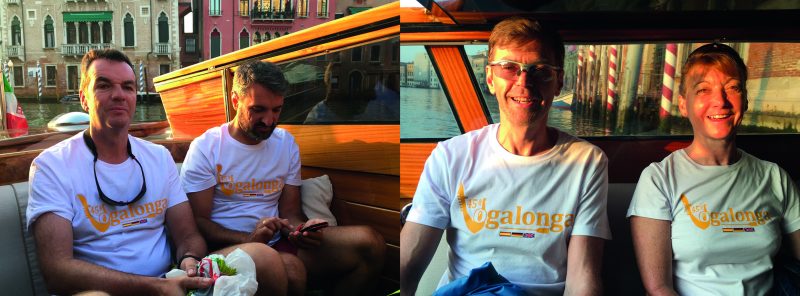
To be early, to snatch a position far in front and to complete the course speedy had been the suggestion for avoiding the general chaos. To make it short: This is what we did. After three hours we had reached the finishing line, where one had to get out of the way as quickly as possible because of the following boats. For me these were three hours of high concentration („tunnel vision“), for the team a real effort. We skipped catering stations, and peeing was limited to one and only one stop at a sandbank. The two German participants (me and Volker, the stroke) pushed the boat through the entire track and the Spanish-Scottish rest of the crew seemed to be overwhelmed by so much determination and – highly efficient – joined in.

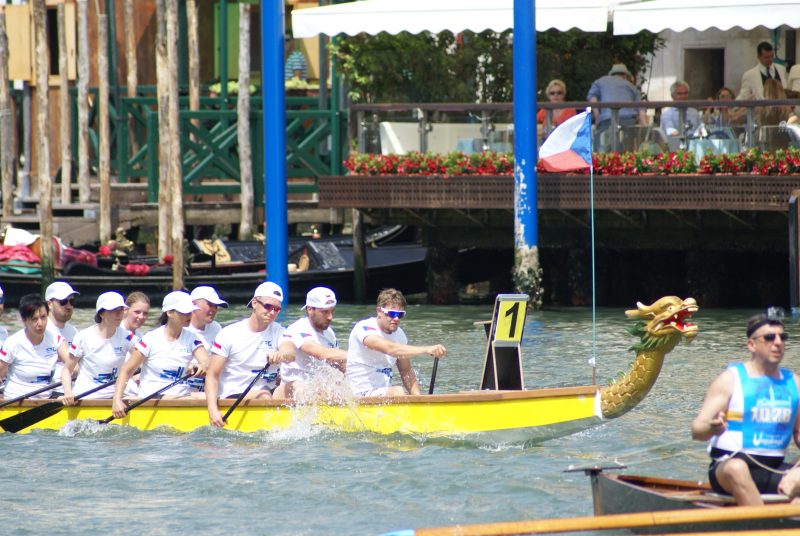

There are three options to participate in the Vogalonga. Firstly, the way we did it (fast). This is not the relaxed fashion and physically demanding but spares nerves and pain (esp. on the bottom). And it is recommended to get a starting position in the front area. Secondly, one may „swim with the tide“ of the midfield, where one needs a proper portion of humour and composure as well as faith in the coxswain. On the other hand, one is part of the colour- and cheerful crowd and enjoys the all-round enthusiasm (funny). Thirdly, one may act as „rear end light“. Here one needs plenty of time, a good endurance and a strong sun cream. One is part of the movement but does one’s own thing, maybe with extended recreation breaks, and stays away from the center of the happening (relaxed). Each to his own.

Almost arriving at the end, we overtook a boat of well-built ladies, sumptuously dressed in pink (not the ones on the picture above) who had obviously found an additional way of participating in the Vogalonga, i. e. by taking considerable short cuts. They weren’t the only ones. It has no consequences on this tour and does not lead to disqualification. The Vogalonga is not a regatta in a literal sense but a big show. Our Spanish boat, for example, with the colourful imprints on their T-shirts, red flowers in the hair and black hats was a real eyecatcher, and thus a highlight of the show. Alberto, member of our crew, writes in his farewell WhatsApp message: „Ha sido un placer conoceros a todos … peeero la próxima Vogalonga iré con melena, clavel y sombrero cordobés para irme con esas malagueñas“. (It was a pleasure to meet you all … but next time I will form up with long hair, red flower and hat from Córdoba to be allowed to join these women from Málaga.)
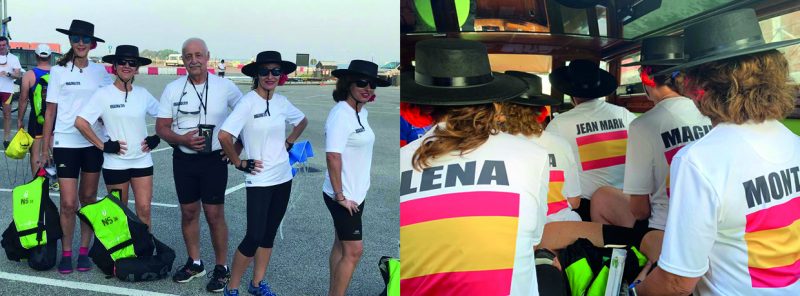
Besides all this fun and composure, participating in the Vogalonga is exhausting indeed, and this already starts at the front-end. Our boats were riggered up in Tronchetto. This is an artificial island in the Lagoon where you find parking garages and a big tarred parking area with no shadow at all. Here many of the teams had kept their vehicles, trailers and boats. A single jetty provided access to the water, this restriction leading to quite some chaos before and after the tour. It is interesting to note that quite a few other teams had fixed their boats at the edge of one of the canals in the city (leaving them there overnight) and thus had an easier life in the morning of the regatta.
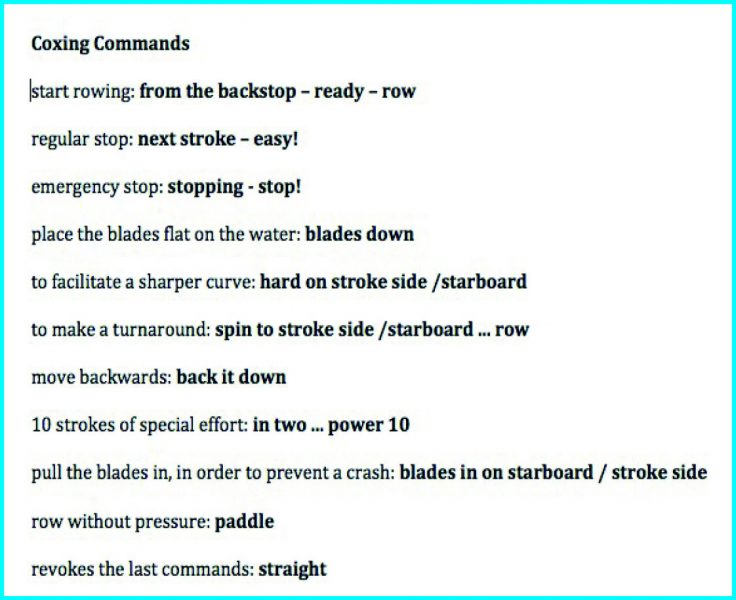
With this list, collected from several sources, I prepared myself for the coxing job. And the team, of course, had to follow my maybe unorthodox instructions (shouted out loud).
A secret of a successful Vogalonga is the cooperation of the teams, including all the participants from wherever they come. I am not sure whether our boat (two Spanish, one Scottish, two German rowers) found the best way to fulfill this requirement, but I am still fascinated how flexible and at the same time disciplined we all were. Some of us never had met before, never rowed together. The spoken languages were Spanish, English, French, even German.
More than once I have heard that what distinguishes man from other creatures and is responsible for his history of development is his capacity to cooperate. If you do not believe in this statement, this report may lead to some contemplation. If you want my opinion: To get this insight is worth the trip to Venice and the participation in the Vogalonga.
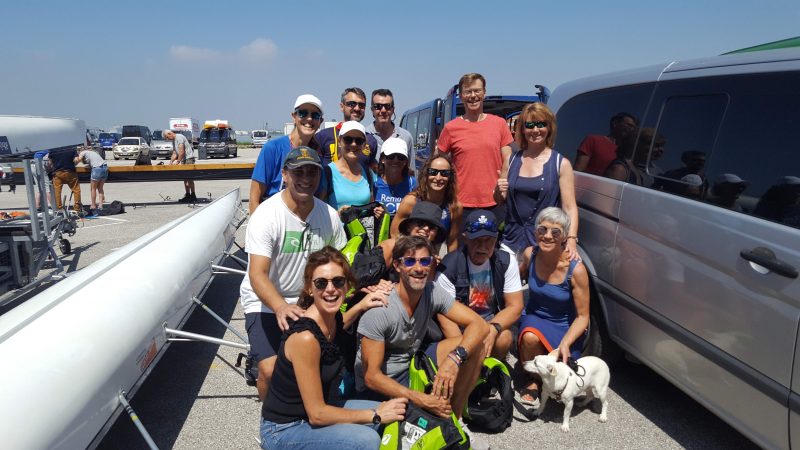

Pictures with a *: Eric Bardin
Pictures with **: Dulce Gallart e Alberto Perez Torrus


Schreibe einen Kommentar